#ngc 346
Text
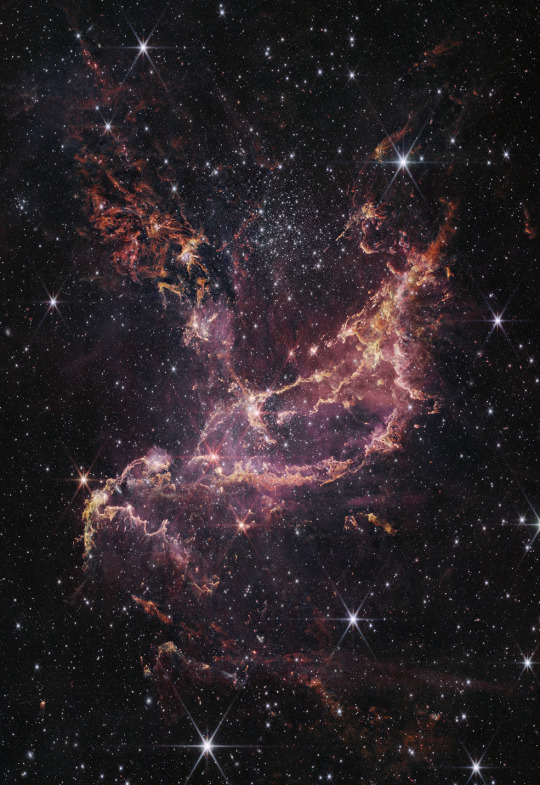
Star formation in the dusty ribbons l Webb


Star Cluster NGC 346 ESA/Hubble (x x)
#nasa#webb#space#star cluster#ngc 346#james webb telescope#universe#astrophotography#astronomy#planets#galaxy#stars#night#sky#hubble telescope
2K notes
·
View notes
Photo

Star Nursery NGC 346 in Small Magellanic Cloud
#nasa#hubble telescope#stars#astrophotography#nebula#galaxy#planet#cosmos#space#planets#astronomy#ngc 346#star cluster#solar system#night sky
3K notes
·
View notes
Text

Infrared Cluster
158 notes
·
View notes
Photo

NGC 346 !
Composite. X-ray: Chandra: NASA/CXC/SAO, XMM: ESA/XMM-Newton; IR: JWST: NASA/ESA/CSA/STScI, Spitzer: NASA/JPL/CalTech; Optical: Hubble: NASA/ESA/STScI, ESO; Image Processing: L. Frattare, J. Major, N. Wolk, and K. Arcand
#art#photography#space#cosmos#cosmic#universe#NGC 346#nasa#chandra#space telescope#composite photo#caltech
31 notes
·
View notes
Photo

NGC 346, a young star cluster and nebula in the Small Magellanic Cloud // Tom Peter AKA Astrovetteman
#astronomy#astrophotography#nebula#emission nebula#star-forming region#NGC 346#small magellanic cloud#SMC#tucana
100 notes
·
View notes
Photo
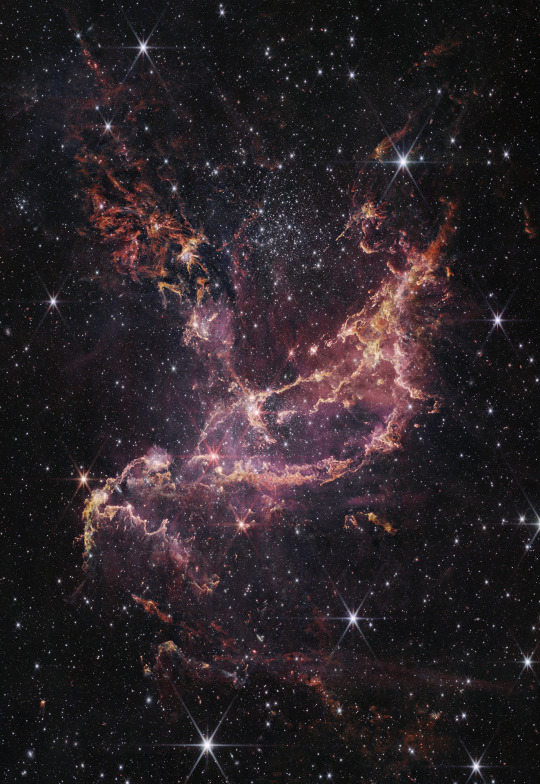


Link: NASA’s Webb Uncovers Star Formation in Cluster’s Dusty Ribbons
#NGC 346#Small Magellanic Cloud#James Webb Space Telescope#James Webb Telescope#NASA#space#star formation#astronomy#astrophotography#religion is a mental illness
52 notes
·
View notes
Text
Descubiertas zonas de formación estelar nunca antes vistas
Descubiertas zonas de formación estelar nunca antes vistas
El telescopio espacial James Webb no deja de sorprendernos con sus descubrimientos. Mirando a la nebulosa NGC 346, que consiste en un grupo joven de estrellas rodeados de gas y polvo, el telescopio encontró focos de formación estelar nunca antes vistos.NGC 346 se encuentra en una galaxia enana vecina a nuestra galaxia, concretamente en la Pequeña Nube de Magallanes. Tiene una composición mucho…

View On WordPress
#Astronomía#estrellas#formación estelar#nacimiento de estrellas#nebulosas#NGC 346#Telescopio espacial James Webb
2 notes
·
View notes
Text
Small Magellanic Cloud
Image exposure per tile:2 x 8.5 min; 1 x 7.8 minImage size: 3.22º x 2.09ºImage date: 2022-10-02
The Small Magellanic Cloud (SMC) is a nearby dwarf galaxy, about 200,000 light years away, well known to inhabitants of the Southern Hemisphere. Well, perhaps it is well known to astronomers and others who look up at the stars.
It is one of the largest objects, with an apparent size of 5º x 3º, while…
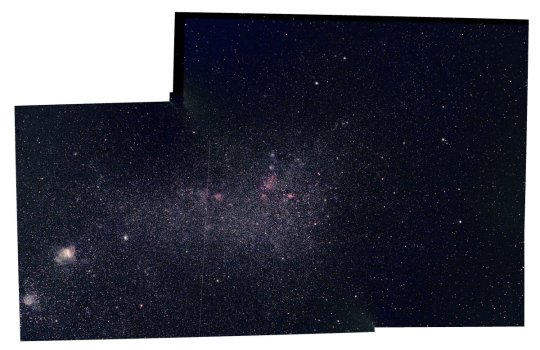
View On WordPress
#amateur astronomy#Astronomy#Cosmic Focus Observatory#cosmos#creation#deep sky#Featured#image#nature#NGC 346#NGC 371#NGC 395#photography#science#Skywatcher esprit 120#Small Magellanic Cloud#SMC#space#Stars#Tucana#Universe#world#ZWO ASI 071 Pro
0 notes
Text
Hubble encontró estrellas en espiral del universo primitivo
Increíbles imagenes
A la naturaleza le gustan las espirales, desde el torbellino de un huracán hasta los discos protoplanetarios en forma de molinete alrededor de estrellas recién nacidas, hasta los vastos reinos de las galaxias espirales en todo nuestro universo.
Ahora los astrónomos están desconcertados al encontrar estrellas jóvenes que están girando en espiral hacia el centro de un cúmulo masivo de estrellas en…

View On WordPress
1 note
·
View note
Link

Two articles published in "The Astrophysical Journal" report different aspects of a study on NGC 346, an open cluster of stars in the Small Magellanic Cloud, one of the satellite dwarf galaxies of the Milky Way. Two teams of researchers who share their respective leaders, Elena Sabbi of the Space Telescope Science Institute and Peter Zeidler of the AURA/STScI for ESA, used observations conducted with the Hubble Space Telescope and the VLT. They examined the spiraling motion of the cluster's stars within it, a motion that appears to favor star formation.
1 note
·
View note
Photo

Spiralling Star Birth
330 notes
·
View notes
Note
Lunaaaaaaaaaa
💫
My lovely elleeee 💖
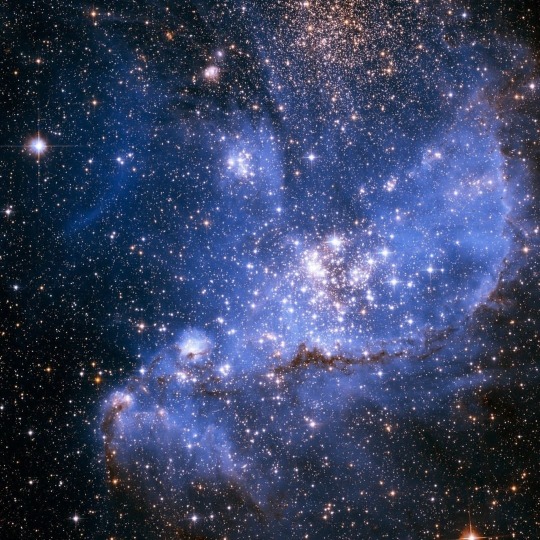


#since you love the ocean <3#also you have a calm and chaotic personality at the same time#in a positive way ✨#there's so much going on in your pretty mind#this is the star cluster ngc 346#don't you think it looks like an ocean of stars? 🥺#[月];lovely message#with elle
3 notes
·
View notes
Photo
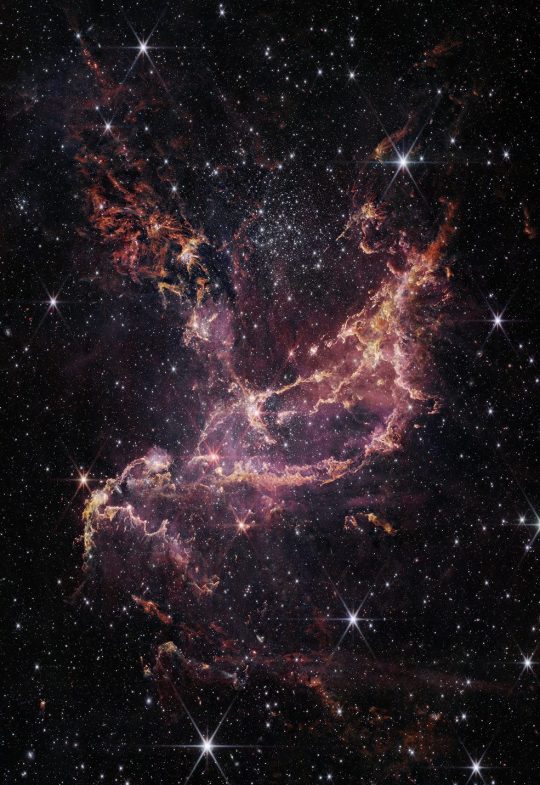
NGC 346, shown here in this image from NASA’s James Webb Space Telescope Near-Infrared Camera (NIRCam).
Image processing: A. Pagan (STScI), N. Habel (USRA), L. Lenkic (USRA) and L. Chu (NASA/Ames)
Photo : NASA, ESA, CSA, O. Jones (UK ATC), G. De Marchi (ESTEC), and M. Meixner (USRA)
#art#photography#space#cosmos#cosmic#universe#NGC 346#nasa#james webb space technology#esa#stars#blast#infrared#chandra x-ray observatory
19 notes
·
View notes
Photo

NGC 346, part of the Small Magellanic Cloud // Rocco Sung
#astronomy#astrophotography#nebula#emission nebula#star-forming region#NGC 346#SMC#small magellanic cloud#tucana
23 notes
·
View notes
Text
NASAs Webb Captures an Ethereal View of NGC 346
Download the full-resolution version from the Space Telescope Science Institute. Filaments of dust and gas festoon this star-forming region in a new infrared image from MIRI. One of the greatest strengths of NASA’s James Webb Space Telescope is its ability to give astronomers detailed views of areas where new stars are being born. The latest […]
from NASA https://ift.tt/0HGQrUF
0 notes

